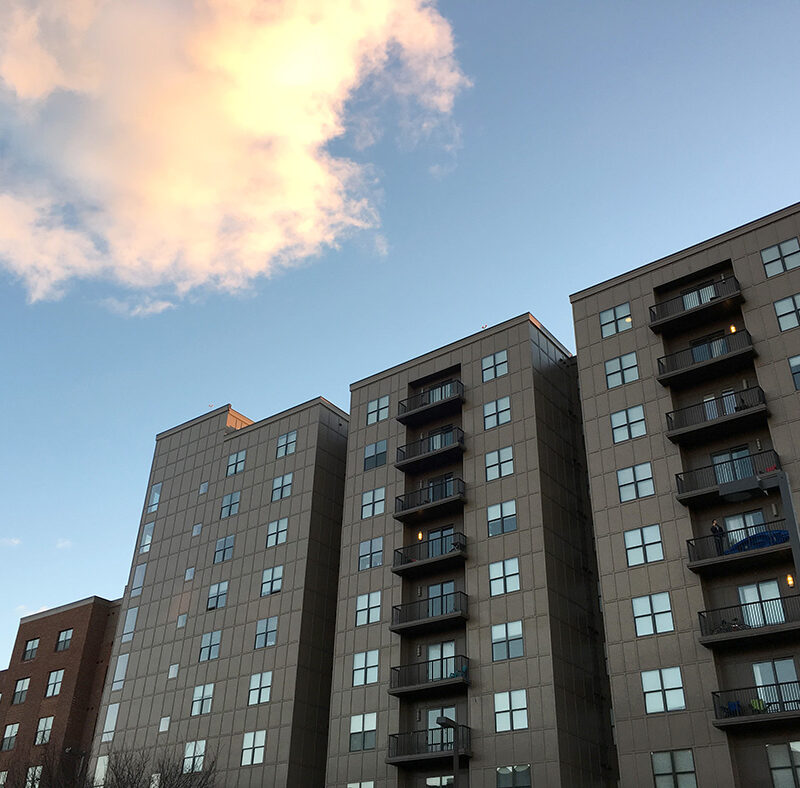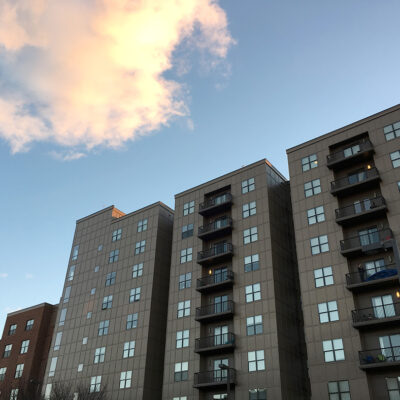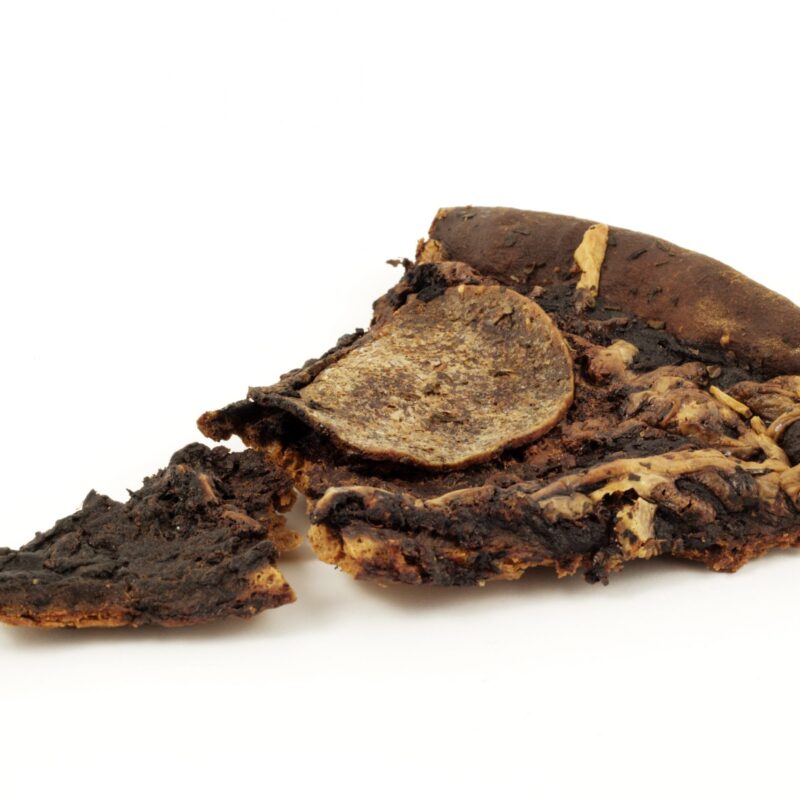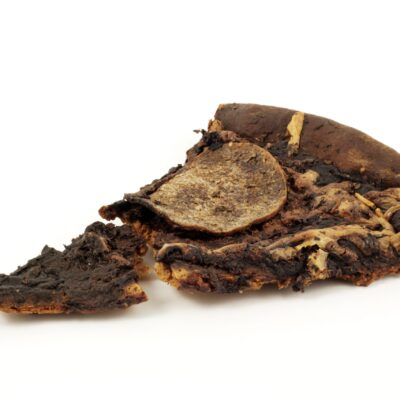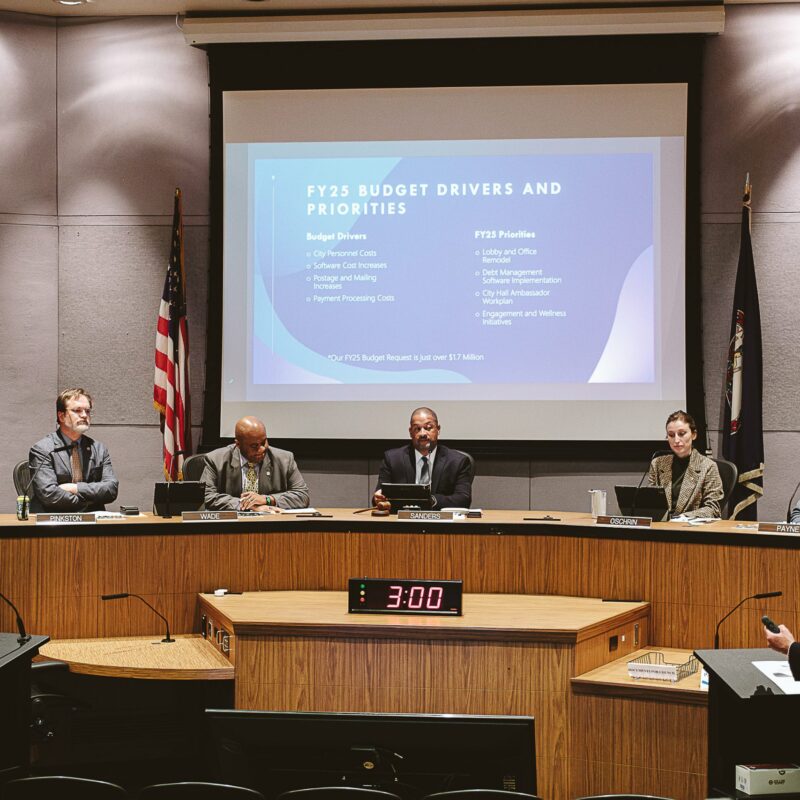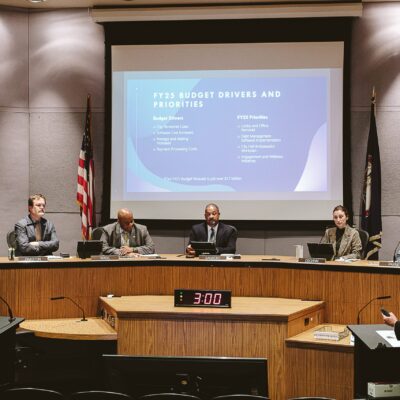Thought experiment: Forget the Thomas Jefferson of the powdered wig. Forget the TJ of fluent French, the Declaration of Independence, and architectural treasures. While you’re at it, forget the George Washington of the Delaware crossing, the John Adams of high-stakes diplomacy, and the brilliant 36-year-old James Madison who dreamed up our Constitution. For now, think of these guys in a different way: up to their elbows in manure.
Yes, what the first four U.S. presidents most had in common was—according to Andrea Wulf’s new book, Founding Gardeners—a deep love of growing plants. For Wulf, a garden writer who’s based in Germany and was educated in London, “It’s impossible to understand the making of America without looking at the founding fathers as farmers and gardeners.” Her book does just that (as will, presumably, her April 18 talk at Monticello—part of Historic Garden Week).
Wulf’s visit to the little mountain marks the publication of her book, Founding Gardeners: How the Revolutionary Generation Created an American Eden. The evening will include a garden party, informal tours of Monticello, and heavy hors d’oeuvres. You’ll need a reservation; call 984-9880 to secure your $60 tickets. |
One of the most striking themes in Founding Gardeners, repeated in the story of each early president, is that of the reluctant ruler, chafing at the demands of his office and pining for his fields and flowerbeds at home. In part, this accounts for America’s cherished two-term limit on presidential power, a tradition begun by Washington. “It’s wonderful to see how they were clearly not really looking for power,” says Wulf. “All of them had described themselves as foremost farmers and gardeners. All of them would have preferred to be retired on their farms working their soil.”
Not only that, but they were really good at gardening. Jefferson’s terrace vegetable garden, Wulf writes, “made Jefferson the most extraordinary gardener in the United States.” He experimented with hundreds of vegetable varieties and swapped seeds with far-flung correspondents; he invented a mathematically perfect moldboard (part of a plow) and refused to patent it so that it could be shared. John Adams was a compost freak, closely examining piles he spotted while on diplomatic assignment in Europe, comparing them with his own in Massachusetts. And at Mount Vernon, Washington presaged our current mania for native species, planting an innovative and all-American garden with redbud, dogwood and crab apple.
Wulf’s book spans the history of the American Revolution, the birth of the Constitution and our early political parties, the Lewis and Clark expedition, and the construction of Washington, D.C.—a period of 60 years or so. Throughout, she shows again and again how horticulture was woven into the founding fathers’ lives and work, shaping their politics and defining the young nation.
Indeed, gardens in that era—as perhaps in our own—could be as politically charged as a campaign sign stuck in a manicured lawn. Jefferson, for example, believed in limited federal government and was unhappy with Washington’s plans for a grand capital and imposing presidential mansion. When his turn came to serve as president, TJ (in a rather passive-aggressive move) allowed the White House to remain in a state of half-built chaos, planting not one tree or shrub in its gardens, cultivating instead an image of humbleness in Washington.
The founding fathers’ own estates were just as intensely symbolic, revealing not only political beliefs but personal contradictions. Madison, eager to make a good impression on visitors to Montpelier, built a model village for his slaves close behind the big house, complete with wooden floors and glass windows. Never mind that the majority of the Montpelier slaves still lived out of sight in mud huts.
For locals, the book functions as a guide to our backyard and two of its most famous residents. Jefferson, especially, emerges in the book as a fascinating character: smuggling rice out of the Italian Alps under threat of death, keeping grizzly bears on the White House lawn, and declaring that only farmers should be elected to Congress. Like all four of the early presidents, he was a true polymath in his wide-ranging accomplishments and intense curiosity, a sharp contrast to many in our modern crop of leaders.
Just like farmers, the founding fathers are invoked by nearly all political sectors in America as models and heroes. I spoke with Wulf about her protagonists—who whether generals, diplomats, or scientists, were gardeners all.
A conversation with Andrea Wulf
How were the Monticello gardens part of the inspiration for your new book?
Andrea Wulf: [The topic] really took me by surprise. I was researching [colonial-era nurseryman] John Bartram. I was passing Monticello and thought, I’ll have a look. I’ve always seen [Jefferson] as the president of the United States, the writer of the Declaration of Independence…it never even crossed my mind that he might have been a gardener.
|
Andrea Wulf |
Arriving on the mountaintop there, and seeing this absolutely meticulous garden…to this day, the vegetable terrace at Monticello is my most favorite place in the world. The contrast of these rows of vegetables and the very clearly manmade terrace, and then seeing the mountains and the distance and the horizon…[It’s] such a weird idea to put a garden on top of a mountain, and it still is a problem because of the water. Every summer they’re having problems with the water.
It combines two sides of his personality—the search for the beautiful and sublime, and the search for being productive and utility. The combination of the productivity of the land as expressed in the vegetable terrace, with the sublime beauty of the surrounding landscape.
You write at one point in the book about Monticello being in a shambles (after Jefferson had just retired as secretary of state). That’s a contrast to the manicured look it has today.
[In his lifetime] there was constantly building work going on. He builds it up, pulls it down. It’s the same in the garden—he’s constantly doing something. You’ll always have a gardener on the lawn, or in the flowerbed working. The place was full of people, bubbling. He lived at a relentless pace…he’s constantly drawing up new designs. A lot of them never make it from his notebook onto the ground.
Jefferson comes across as quite charming in your book—a real singular character. I love the story of breaking his wrist jumping over a kettle in someone’s backyard, and the one about how, as president, he doodled garden designs instead of attending to national affairs. What’s your favorite story about him?
I think my favorite bit is really his relationship with his granddaughter Ellen and the letters he writes [her and his other granddaughters] from the White House. He’s running an account of letters so if he writes a letter they have to write a letter back, crediting and debiting their letter accounts. The letters are just bursting with love. At the same time he would always, however charming and funny these letters are, teach them something in this very light way. He’s not whipping knowledge into them; he has a real knack for playful education.
What would you ask him if you could walk his gardens with him?
I would ask him what he would think about how they should look now, because he was always…very innovative, and obviously Monticello has to stay the way he had it. I’m sure he would have very different ideas now. He would probably come up with something completely obscure and weird. I would ask him about organic farming, environmentalism, all these things which I think are incredibly important now in America. I’d like to be with him now in his garden, rather than in the 18th century.
|
Monticello |
Would modern-day hobby gardeners recognize the plants grown and methods used in Jefferson’s garden?
I would say so—not every single thing, but there are the really obvious things like squashes and cabbages and broccoli. Jefferson was completely obsessed with salads. It might not be exactly the same salad you buy in the supermarket today, but he had lots of different varieties of salads. [He grew] spinach, tarragon, onions, eggplants, peppers.
What he’s doing, unlike a lot of other gardeners, he’s not just looking to England in terms of vegetables he’s growing. He’s bringing in slave traditions, Native American species…he’s basically growing vegetables which are much more suitable for the hotter Virginia climate than cabbage, for example. [He believed that] the greatest service you can do for your country is to introduce a new plant. That’s quite an extraordinary thing to say. [He said] if I try 100 different plants and 99 fail, for the one success it was worth it.
Can you talk about the difference between Jefferson’s approach to the White House gardens when he was president, and what he created at Monticello? How about at his second home, Poplar Forest?
Jefferson, in his whole approach to the presidency, used simplicity as a political symbol, in terms of his dress or in terms of formalities at dinners. He was [previously] a fairly well dressed man. In France he dressed as a proper courtier with silks and ruffles. [As president] he suddenly runs around with holes in his shoes. And I think he never sees the White House as a private house. It’s a symbol for the president and it’s a symbol for government. That’s why he is treating it completely differently than Monticello.
It’s very telling that the main thing he leaves at the White House is [the idea] to make the garden small. If you look at any other seat of government, if you look at castles, the gardens are enormous. The formality which was always associated with Versailles, he breaks and makes it softer and gentler.
The design is very similar to what he then does at Poplar Forest. That would have been his ideal president’s house because it’s much, much smaller. For him the White House is too big and expresses too much political strength in the federal government.
|
No pun intended, but TJ would have dug the First Lady’s garden, says Wulf. |
What do you think he would have made of Michelle Obama’s organic garden at the White House?
I think he would have absolutely loved it. Jefferson was absolutely into vegetables. He was a great educator and a lot of what Michelle Obama is doing is to set a sample and educate people about food. That was very much how Jefferson saw his role, as an educator. So I think he would have liked it.
[Monticello Director of Gardens and Grounds] Peter Hatch also advised her, and she’s actually growing quite a few of the Monticello heritage vegetables: Brown Dutch lettuce, tennis-ball and prickly-seeded spinach, and there are many, many more.
Jefferson and Madison championed the idea of the U.S. as an agrarian republic, a nation of small farmers. Has it become a completely different country, or do you see similarities in the way agriculture interacts with American politics and culture now?
It’s obviously a completely different country but some of the basic tenets are still there. For example if you compare England and America, the English are much more obsessed with ornamental gardens. In America it’s much more about the soil, and the land still very much means liberty and freedom. In England the houses are hidden behind hedges; here it’s much more open, [the placement of houses says] “this is my land; it’s mine.” There’s a visceral sense of belonging to the land.
Economically, agriculture’s still incredibly important in the U.S., much more than in a country like Germany or England. I suppose [the founding fathers] put the seed down for that, and that grew into something which might be very different than what they envisaged. It’s an industrial agriculture. This is not about the independent, small-scale farmer who’s literally feeling the soil between his fingers.
|
At Montpelier, Madison consciously built his slave village behind the main house to project a more enlightened image to visitors, especially foreigners, says Wulf: "It is like a staged scene which shows his visitors, ‘Here, look at me, I know I have slaves, I know you don’t like that, but at least they’re so happy here and they live in this pretty little village and they have little gardens.’" |
What would Jefferson have thought of that state of affairs?
I don’t even know if Jefferson would have had a problem with that. He was really interested in agricultural implements and innovations. Maybe he would have liked it, maybe not. What he would have not liked is [that] through this huge machinery, people are not actually in that close relationship with the soil.
What would he and Madison think about the current American movement toward homesteading and urban gardening?
They would have appreciated that, because that brings people back to that visceral, close relationship to the soil…Something like urban farming or rooftop farming, like they have in Brooklyn now, they would have totally appreciated. Jefferson, when he moved in the 1790s to Philadelphia, he very clearly wrote “I want a house with a garden.” When he lived in Paris he had a garden; he would get new types of crops and would test them in his garden in Paris.
Let’s talk about James Madison. What do you make of his slave village? It seems like such a naked attempt to influence opinion, almost like landscaping as propaganda.
Madison was very much aware. Having seen how visitors would go to Mt. Vernon and Monticello after Washington and Jefferson retired, he’s very aware that the same would happen at Montpelier. A lot of these visitors, especially foreigners, would also go to the slave villages and talk about how badly the slaves were treated and how awful the huts were. He’s conscious that this is going to be something people will see and think about.
And he’s very much in touch with British agricultural literature, and after the French Revolution, when British landowners are incredibly worried that the Revolution from France will come across the channel, there is a massive rise in publications which talk about “We have to build these modern cottages to provide our workers with better living spaces, but also to show to the outside world that we are not exploiting our workers.”
He’s using the same [notion]. It is like a staged scene which shows his visitors, “Here, look at me, I know I have slaves, I know you don’t like that, but at least they’re so happy here and they live in this pretty little village and they have little gardens.” If you look at the other slave quarters on the plantation, they were the usual huts with mud floors. They’re very different and they’re out of sight.
Historic Garden WeekApril 16-23 |
You write about Madison’s speech to the Agricultural Society of Albemarle in 1818 (later printed and widely read) that warned we couldn’t keep cutting forests down forever. Ecological concerns are very much a part of our culture now, but at the time, this was a radical notion. Where did environmentalism actually originate for him?
If you look at the beginning of the colonies in America, people would just come clear a bit of land and grow tobacco. Tobacco is a really obnoxious plant which depletes the soil within, I think, four years. And then because land was so plentiful, they would go and clear a bit more forest. The forest became a hindrance, [an] obstacle to agriculture for a very long time in America.
By the end of the 18th century—in particular in Virginia, which was the first colony but also for a long time the most important and economically viable—[people] suddenly saw that the soil was completely and utterly depleted. Large parts of the forest had gone. More and more people were leaving Virginia and going south and west after the Louisiana purchase. Basically the foot soldiers, the independent farmers of the U.S., were fleeing Virginia because the soil was not good enough anymore. The yields, the harvests were going down and down and down.
[Madison]’s not doing this like the Romantics a little later, [basing environmentalism on] the romance of nature or living in harmony with nature. He’s seeing the need to protect the environment for economical reasons…You can only live off nature if you live with nature, is basically what he believes.
For me that was the greatest surprise in writing this book: he’s this forgotten father of environmentalism.
How did you as a European get inside the American fascination with our founding fathers?
Well, I think it’s sometimes easier to look at it from the outside because it’s almost that alien gaze. I had the same thing when I came to England; [I thought] they’re all so crazy about gardening! That’s what got me going to write about gardens, as a way to understand the English nation.
It’s the same if I look as a European to America, because you all learn your founding fathers stuff at school. While I didn’t have any of that, I read their letters and diaries, and [gardening] was the thing I thought they all had in common. I think from the outside it’s easier. It’s also a bit scary because you hope you’re not missing something that every American schoolchild knows!
If you see nothing else…
Overwhelmed by the botanical bounty at Monticello? I asked Andrea Wulf to recommend just five plants on the little mountain that help tell Jefferson’s story. Here are her picks.
|
Tulips, Twinleafs and Fringe Trees are a few of the noteworthy species found at Monticello. |
1. Spring bulbs in the oval flower beds
“They always remind me of Jefferson and his relationship to his grandchildren. They write letters to each other; his granddaughter Anne has to count the tulips. He’s in the White House, and she has to go [inspect the garden] and say, ‘20 tulips have come up.’”
2. Twinleaf flowers
“The Latin name is Jeffersonia diphylla, named after him. Not many presidents and politicians have plants named after them. It shows Jefferson was very much respected in the botanical world. He was absolutely highly regarded as a botanist and a gardener.”
3. White oak tree
“It’s one of Jefferson’s favorite trees because it’s a tall tree, and for him size very much mattered as an expression of the strength and vigor of the U.S. The white oak stands for me as a symbol for Jefferson’s celebration of the wilderness, and the importance of the native forest for him.”
4. Fritillaria pudica flower
“[It’s] the little yellow plant that Lewis and Clark collected near the Columbia River. [It’s] a stand-in of the importance of the expedition.”
5. Native flowering shrubs
“The fringe tree, Carolina allspice, Magnolia virginiana…the native flowering shrubs were so important for people like Jefferson and Washington. They used them as ornamental plants, rather than earlier colonists who wanted European plants. [It was about] being proud of America’s native species.”
/Andrea2010.jpg)
/aerials-8may09-221.jpg)
/Obama_SamanthaAppleton.jpg)
/montpelier-JL-12.jpg)
/flowers.jpg)
